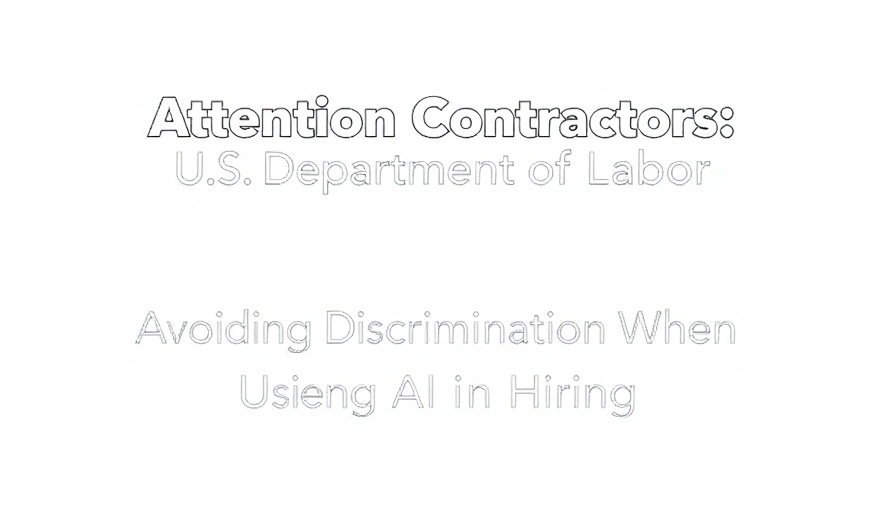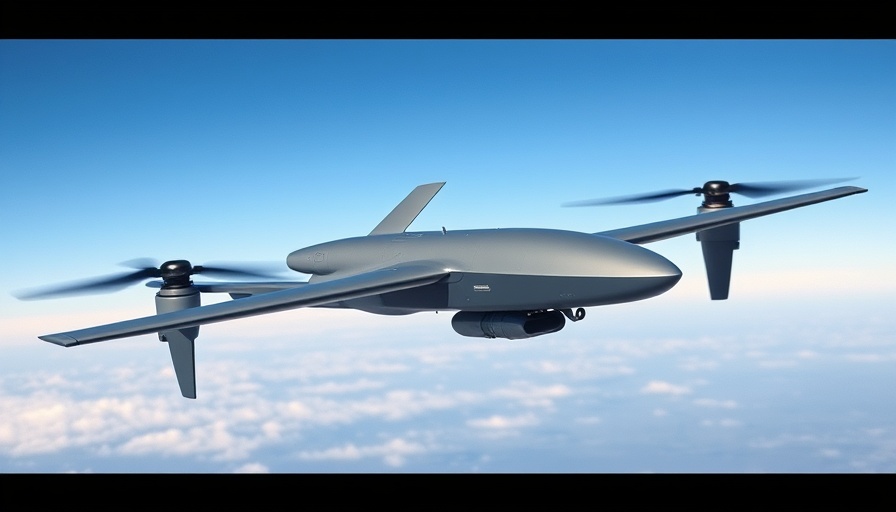
Understanding the New USDOL Guidance on AI in Hiring
The recent guidance from the U.S. Department of Labor (USDOL) serves as a wake-up call for employers, particularly in sectors like construction, where Artificial Intelligence (AI) is becoming increasingly prevalent in hiring processes. As AI tools drastically change how businesses recruit talent, they also raise significant questions regarding fairness and discrimination. This guidance emphasizes the importance of integrating anti-discrimination practices into AI hiring methodologies to protect marginalized voices in the workforce.
Why AI’s Role in Hiring is Growing
AI is not just a futuristic option anymore; according to statistics, nearly 80% of U.S. companies—almost all Fortune 500 firms—are employing AI-powered hiring tools. These technologies can match candidates to jobs, automate resume screenings, and prioritize applications based on complex algorithms. However, the USDOL guidance cautions against relying solely on these tools without considering their potential biases, which can further entrench existing workplace discrimination.
The Dangers of Discrimination in AI Tools
The usage of AI in recruitment comes with inherent risks tied to systemic biases. Algorithms often learn from historical hiring data, which may reflect past discriminatory behaviors, leading to perpetuating inequality in hiring practices. According to the USDOL, companies must be vigilant, as unchecked AI tools may unintentionally discriminate against applicants based on race, gender, and disability, creating a less diverse workforce and undermining efforts in diversity, equity, inclusion, and accessibility (DEIA).
Implementing the AI Framework: A Multi-Faceted Approach
The AI guidance sets forth ten focus areas that circle around five pivotal themes, emphasizing inclusive recruitment and the critical need for human oversight in AI hiring processes:
- Inclusive Advertising and Recruitment: Employers need to ensure job advertisements reach a diverse range of candidates, being cognizant of the user experiences of those from protected classes.
- Impact on DEIA Initiatives: Assessing how AI hiring technology influences existing diversity initiatives is essential for ethical practices.
- Accommodations for Job Seekers: Employers must uphold obligations to provide reasonable accommodations, facilitating accessibility for all applicants.
- Responsible Employment Practices: Employers should ensure compliance with relevant laws, taking full responsibility for their hiring decisions.
- Human Oversight: Implementing policies for human oversight can greatly reduce errors that AI systems may produce.
Effective Practices for Compliance and Monitoring
To implement these guidelines effectively, organizations must commit to ongoing compliance and monitoring. Conducting regular AI audits can illuminate the biases potentially present in hiring practices. Third-party experts, including employment attorneys, can aid in evaluating the algorithms and datasets being utilized. Furthermore, companies should persistently monitor their AI tools, adapting to model updates and changes in data to maintain a fair recruitment process.
Conclusion: Taking Action Against Discrimination
Ultimately, the USDOL guidance prompts a critical reflection for construction firms on their hiring practices in the AI era. By actively auditing AI use and establishing robust compliance frameworks, these companies not only mitigate risks associated with discrimination but contribute positively to a more equitable workforce. Construction industry leaders must embrace these practices, fostering workplaces where diversity thrives and all talents are welcomed.
 Add Row
Add Row  Add
Add 




Write A Comment